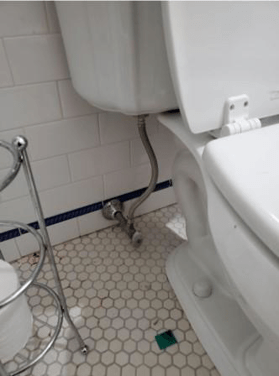Exactly How to Avoid Bathroom Water Damage
Exactly How to Avoid Bathroom Water Damage
Blog Article
Right here in the next paragraph you can locate some really good material around How to Fix a Water Damage Bathroom.

The washroom is exceptionally at risk for moist accumulation as well as possible water damages due to the frequent use of water in it. This post supplies straightforward assessment strategies to help spotting water damage dangers.
The regular use water in the washroom makes it extremely at risk for moist accumulation and potential water damage. By examining it frequently, you can minimize water associated problems.
The adhering to collection of examinations is very easy to execute and also need to be done as soon as in every 3 months in order to maintain your washroom healthy and also to stop possible water problems triggered by the tub, the shower, pipeline joints and also plumbing, sinks, closets, and also the toilet
Do not neglect performing these examinations and also be complete while doing them. Keep in mind that these simple examinations can conserve you a lot of money by giving very early indications for water damages
Sinks as well as Cabinets
Sinks as well as cabinets are revealed to wetness as well as humidity day-to-day as well as are frequently overlooked. Check routinely under the sink and on the kitchen counter above it. Repair any kind of drip in the trap as it might recommend drain troubles. Browse the sink, slow draining pipelines may indicate an obstructed drain. Change sink seals if they are broken or loose.
Tub and Shower
The shower and also tub call for unique attention and also maintenance. Examine the ceramic tiles and also replace if cracked. Make certain that there is no missing cement between the floor tiles. Examine and also replace fractured caulking at joints where the walls fulfill the floor or the bath tub. Blocked drains pipes and pipelines problems will certainly avoid the bath tub from drying and also may suggest serious issues under the tub. Seek advice from an expert quickly to prevent architectural damages. Take note of stainings or soft areas around the tub wall surfaces as they may suggest an inner leak.
Plumbing
Signs for water damages are hard to discover given that most pipes are set up inside the wall surfaces.
Pay unique attention to flooring and also walls wetness and also stains as they may suggest an unseen plumbing problem. Inspect dampness levels in adjoining spaces too.
The Toilet
The bathroom is a prone water joint. Check the water lines as well as look for leakages around the toilet seat, in the hose pipe, as well as under the water container. If you detect any type of signs of wetness on the floor around the bathroom, look for leakages in the toilet edge and also container seals.
Realize that hanging commode bowl antiperspirants increases the opportunities for clogs.
How to Prevent Water Damage in Your Bathroom?
Water damage repair is an expensive, meticulous, and lengthy process. Unfortunately, bathrooms are the most susceptible rooms to water damage due to toilets, showers, and sinks. Pipes and fixtures wear out over time and are not immune to damage. But all is not lost, as there are ways to prevent water damage from occurring in your bathroom.
Check Your Plumbing
Nothing lasts forever, especially pipes, which can rust and begin leaking over time. You should periodically conduct pipe inspections and pay attention for any musty smells or water stains that may indicate you need water damage repair. Here are some things to check:
Frequently test valves for your toilet, shower, and sink to ensure they are properly working. Check faucet supply lines hidden under vanities and replace when needed. Replace cracked or deteriorating caulking along sinks, tubs, and showers. If you notice a clog in your sink, call in a professional. Since you can’t check the pipes in the wall, keep an eye out for stains, drywall bubbling, musty smells, and excess moisture; if the bathroom is on a second level, check the ceiling of the room directly below for these signs. Don’t Overwork Your Toilet
One of the most common reasons bathrooms need water damage repair is due to overflowing toilets. Save yourself the hassle of cleanup by being mindful and not pushing your toilet to extreme limits. If you have young children, it is especially important to keep an eye on them when they are in the bathroom and to teach them how to avoid clogging the toilet. Here are some more tips to help prevent your toilet from overflowing:
If you have a septic tank, only use septic-safe toilet paper Do not flush anything down the toilet besides toilet paper; items like diapers and sanitary napkins will clog the piping Pay attention to your toilet’s water level: If it’s low, it could mean it is partially clogged or that there is a crack in the toilet bowl Maintain Your Shower/Tub
Replace showers or tubs with cracks or other damage; even hairline cracks can allow water to seep in and cause damage. Grout and caulk help prevent water from seeping into walls and floors, so repair them if they are chipped, cracked, or deteriorating. Replace torn shower curtains or shower doors with seals that no longer work. Dry the floor and drain water from the tub immediately after use to prevent damage from sitting water. https://www.alure.com/home-improvements-blog/resources/how-to-prevent-water-damage-in-your-bathroom

I recently found that blog post on Preventing Water Damage in the Bathroom when doing a search on the web. Loved our blog entry? Please share it. Help other people locate it. I enjoy reading our article about Common Causes of Water Damage in a Bathroom.
Schedule A Free Estimate Report this page